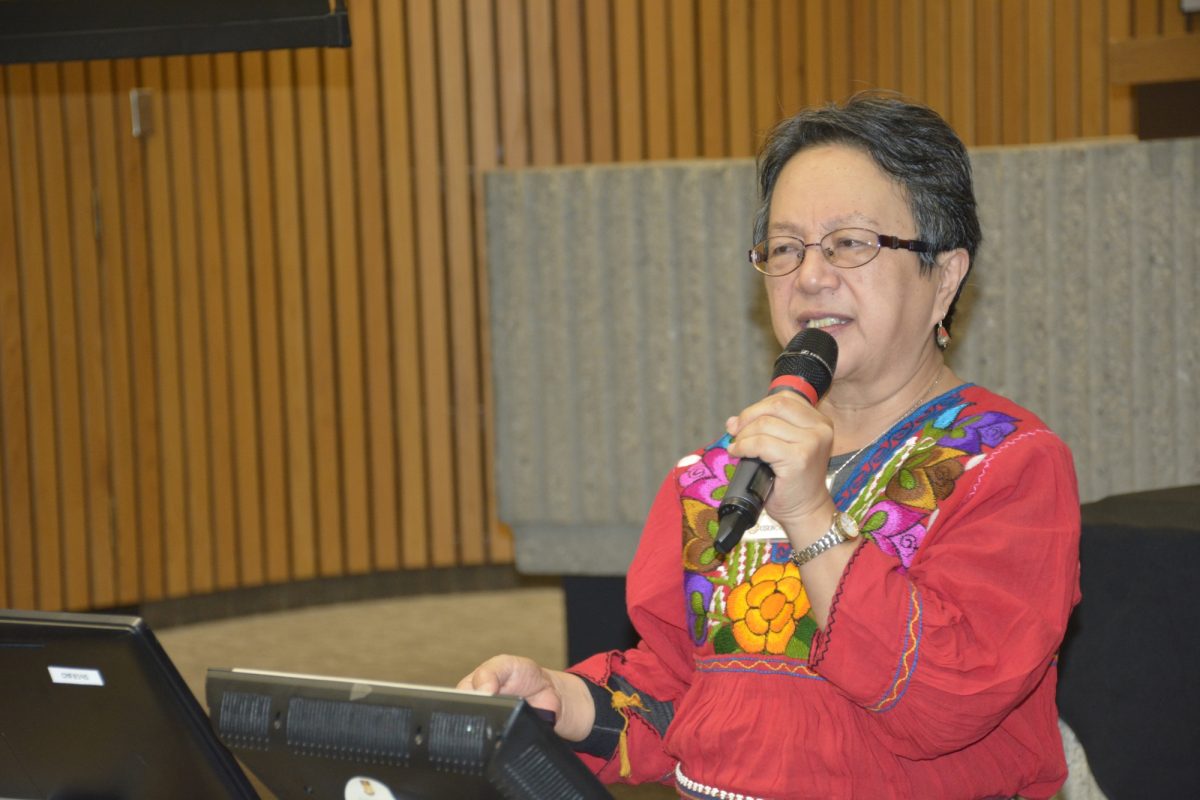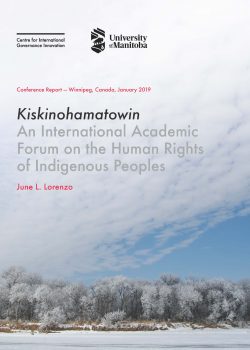
United Nations Special Rapporteur on the rights of indigenous peoples, Victoria Tauli-Corpuz, addressed the Kiskinohamatowin conference at Robson Hall.
Conference report demystifies how to implement UN Indigenous rights declaration
Valuable teaching tool now online
Practical examples of how Indigenous peoples around the world are breathing life into the carefully chosen words of the United Nations Declaration on the Rights of Indigenous Peoples are now available online.

Kiskinohamatowin report
The Kiskinohamatowin report is based on a conference hosted by University of Manitoba Law Prof. Brenda Gunn and consultant Celeste McKay in 2019.
The 28-page report includes brief case studies from Brazil, New Zealand, the Philippines, Russia, Canada and the U.S. on implementing rights to land, sacred sites, justice, language, self-government and the rights of Indigenous children. It provides recommendations for Indigenous peoples, governments, UN bodies, civil society organizations and academic and human rights institutions.
Indigenous peoples fought for decades to craft a declaration with language powerful enough to make a meaningful difference in their communities. Then they fought to have the declaration adopted by governments around the world. Indigenous peoples are still fighting – including in Canada – for those government commitments to be acted upon. In the meantime, Indigenous peoples and their allies around the globe are forging ahead with creative projects inspired by the declaration.
“The Kiskinohamatowin report can serve as a handbook for groups interested in learning what worked and didn’t work in other parts of the world while designing their own implementation projects,” Gunn says. Nine years ago, she wrote the original handbook on understanding the declaration.
The Kiskinohamatowin report also demystifies the complex United Nations mechanisms for UNDRIP implementation, making it a potential teaching tool.






